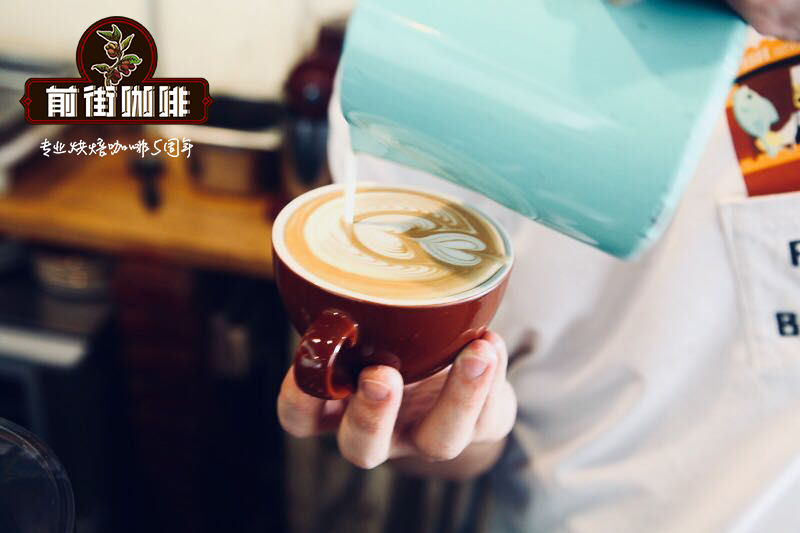How do you drink Italian concentrate? Why is there no Starbucks in Italy? Let the Italian teach you how to drink coffee.

Professional coffee knowledge exchange more coffee bean information please follow the coffee workshop (Wechat official account cafe_style)
Now, wherever you go, you can see Starbucks, but you can't see a Starbucks in Italy.
But then again, it was when Starbucks founder Howard Schultz was drinking coffee in a bar in Milan that he was inspired to build the coffee chain we now see.
You might say that he is just repackaging a good product and pushing it around the world.
But to many Italians, the menus offered by Starbucks and other coffee chains sound Italian, but the coffee they offer is far less than authentic Italian coffee.
I think it's time to reveal the truth. I'm of Italian descent. Like most Italians, I think Italy represents the highest standard of coffee culture, and all coffee should be measured by it.
Italian friends and family are angry that their cherished cappuccino coffee has been defiled, especially the practice of sprinkling a little hazelnut syrup and cinnamon on the coffee foam. I fully understand their feelings and absolutely agree with them.
Image copyright BBC WORLD SERVICE
Image caption
Italians take the quality of their coffee very seriously.
At home, I have a mocha pot for making coffee, which is absolutely indispensable in Italian kitchens, just as an English kitchen cannot do without a kettle for making tea. As far as I'm concerned, the cappuccino, latte and espresso offered by international coffee chains always taste charred and bitter, which is a shoddy imitation of authentic coffee.
Am I missing the point? Is my taste out of date and not catching up with the changing tastes of the global coffee market? Because at present, it seems that not only Italian coffee has gone abroad, but also the authentic taste of Italy has parted ways with coffee.
According to the International Coffee Organization, global coffee consumption has increased by nearly 42% since the beginning of this century. Therefore, we drink more coffee than ever before. This explains why many coffee chains have been expanding over the past few decades, but none of us drink coffee the Italian way.
"I think coffee all over the world these days is a ridiculous imitation of Italian coffee," concluded James Hoffmann, the award-winning barista and owner of Square Mile Coffee Roasters, a square mile coffee shop in London. He belongs to a generation of trained baristas who are based on espresso and promote coffee innovation through sophisticated brewing methods.
"the current global coffee culture is a far cry from espresso," Hoffman said.
For example, you can never ask for a latte in an Italian store. If you do, you have to get a glass of milk. You don't just ask for an espresso at the store; all you have to do is ask for a cup of coffee ("un caffe"). Coffee and espresso are synonymous in Italy.
In addition, there is Australia's "small white coffee" (flat white), which is somewhere between Starbucks latte and macchiato (latte requires 25ml to 35ml espresso, with lots of hot milk. Macchiato coffee requires 25ml to 35ml espresso, with a small amount of milk foam. At present, "Little White Coffee" has gone global and has recently replaced the cappuccino on the Starbucks menu in some parts of the United States.
But the biggest difference is that Italians don't like to sit in an armchair in a coffee shop and savor a cappuccino while surfing the Internet. Instead, they prefer to stand in front of the marble bar of bars that can be seen everywhere in Italy and sip a cup of espresso.
Image copyright BBC WORLD SERVICE
Image caption
"the coffee we drink is a ridiculous imitation of Italian coffee," James Hoffman said. "
However, when it comes to taste and brewing, Italy is trying to recover lost ground and has established the International Italian Coffee Institute (INEI) to protect the espresso culture.
"International coffee chains are spreading and promoting that they serve espresso, but behind our coffee is a unique, non-replicable culture," Luigi Luigi Zecchini, the agency's chairman, wrote on its website.
INEI even offers qualifications to those who firmly uphold the espresso tradition.
Can the Italians win the competition with such a move? I'm afraid it's hard, "because excellent baking techniques and good tasting procedures are becoming more and more international," warns Jeremy Challender, president of London's Prufrock Coffee Cafe and another award-winning barista.
In spite of this, many top baristas always scoff at the coffee offered by international coffee chains.
Hoffman of the Square Mile Cafe in London says it all depends on the roasting skills of the beans. Many chain stores roast coffee beans too dark, resulting in a bitter taste. The roasting color is too light, which can produce a stronger flavor, but if you don't master it well, the coffee will produce sour taste.
"I think, from this point of view, consumers can tolerate bitterness, but they can't tolerate more sour taste," Hoffman said. "as a result, big companies make mistakes because they are too cautious."
Image copyright BBC WORLD SERVICE
Image caption
Italians drink cappuccino coffee in the morning.
But it also depends on the raw materials of coffee beans, and in this respect, Italy's performance is not as good as that of many specialty cafes abroad.
Part of the problem is that the price of espresso is too low. In most Italian bars, a cup of coffee costs less than one euro.
"such a low price cap means that Italian coffee ingredients are so commercialized that there is no option to buy more high-quality coffee at all," Hoffman added.
The way espresso is made is also limited. The espresso provided in Italy is the standard 7 grams of ground coffee powder, almost no change. But professional coffee shops often use a larger amount of coffee powder, each cup of espresso ingredients 8 grams to 10 grams, resulting in a stronger flavor.
This view may be true, but I still think that I will insist on making coffee at home in my trusted mocha pot. I will continue to drink coffee in an Italian way.
This means drinking a cup of espresso every morning and maybe after dinner, but certainly not cappuccino after 11:00 or any milk-based coffee after dinner. Because this method of drinking affects gastrointestinal digestion. All Italians know this.
Important Notice :
前街咖啡 FrontStreet Coffee has moved to new addredd:
FrontStreet Coffee Address: 315,Donghua East Road,GuangZhou
Tel:020 38364473
- Prev

History and present situation of civet coffee is civet coffee the most expensive coffee? civet coffee used to be
Professional coffee knowledge exchange more coffee bean information Please follow the coffee workshop (Wechat official account cafe_style) civet has also appeared in the ears of people who do not drink coffee. Before the emergence of geisha coffee, the most expensive coffee was always won by civet coffee, but in this coffee industry chain, exactly how to produce coffee beans, after reading the article, you may think more about it.
- Next

Wang Wang's first coffee drink new brand Bond Coffee is good? how's Bond Coffee?
Professional coffee knowledge exchange more coffee bean information please follow the coffee workshop (Wechat official account cafe_style) in April 2018 Wangwang Group's new Bond coffee beverage officially launched, the brand slogan I am young, I coffee, but also focus on young fashion. Yu Huimin, deputy director of the production and R & D group of Wangwang Group, said that the annual consumption of coffee in China is growing by 15%.
Related
- Stop business for rectification! Jasmine milk white clerk deliberately did not pack and let the rider wait!
- Ridiculous! Tims pressured the federal government to relax the entry of foreign workers?!
- How to judge the brewing method by the state of the powder bed? How to break out of a deep hole with hand-brewed coffee?
- Detailed explanation of the proportion of gold gouache in hand-brewed coffee? What are the Gold Cup Guidelines?
- What is the difference between the gold label rose summer and the red label rose summer in Guixia Village? Are Rose Summer 1931 and Gori Rose Summer?
- Cudi stores ban other brands of coffee?! Netizen: No problem
- Is it better to make coffee cold or hot? Why is it recommended to drink hot coffee?
- Lucky people collapsed! The store ceiling is full of AI surveillance cameras?!
- Law Enforcement Bureau? Mixue Ice City enters Zhengzhou BRT platform!
- Heavy! Nestlé has been exposed to consider selling blue bottle coffee!

